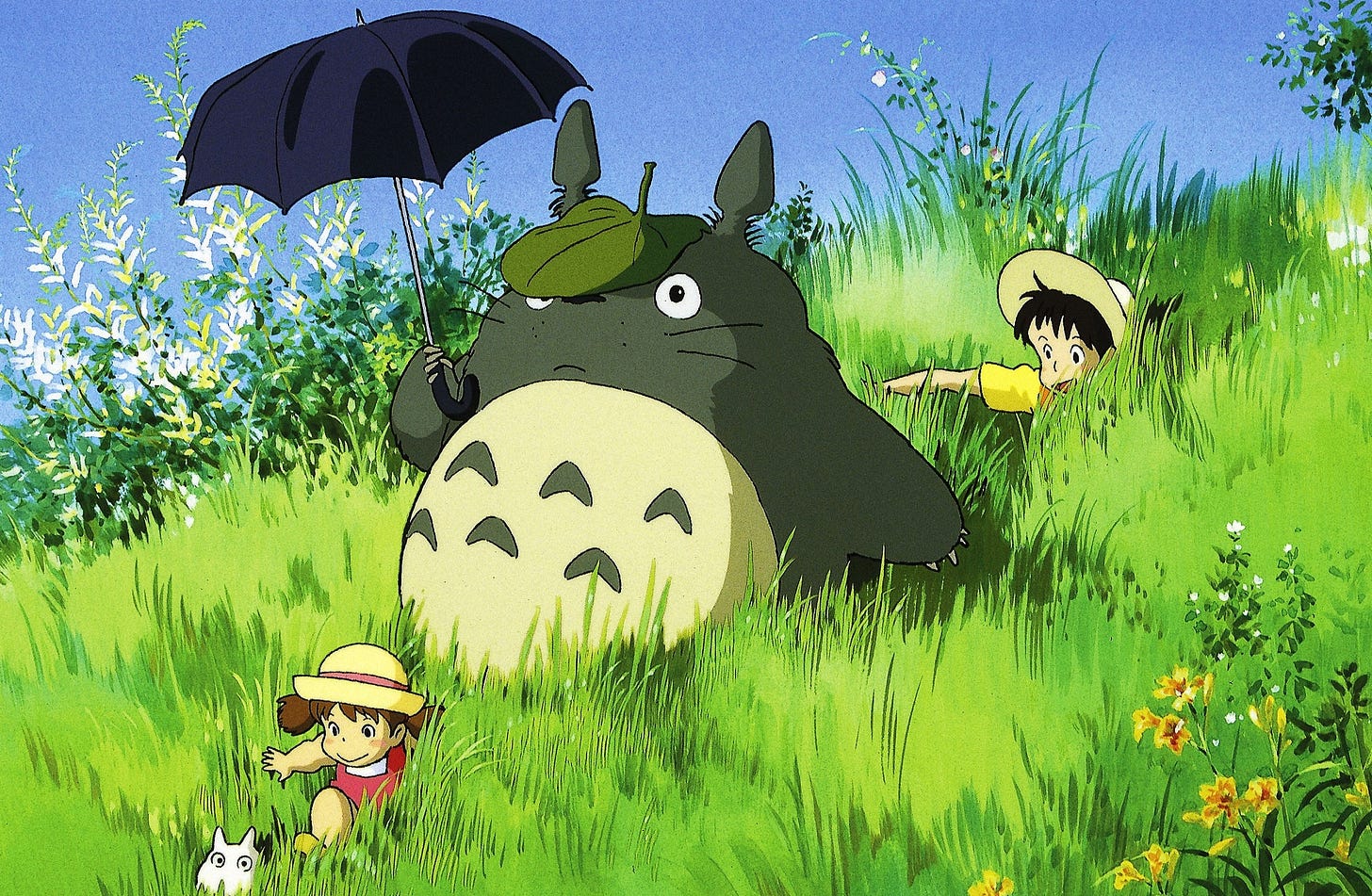Plot is a funny thing.
It’s almost a dirty word in certain cinematic circles, where character and atmosphere reign supreme and a three-act structure is too rudimentary. But of course, the biggest box office successes are all rather heavy on plot. (Whether or not this is a good thing is up to you, reader.)
But when it comes to children’s films—like the delightful rural jaunt that is My Neighbor Totoro—I’m always curious about which approach makes the most sense. You know, for actual kids.
Take something like Soul, for instance, Pixar’s latest universally acclaimed success. (Is Luca good? I don’t know. I have not seen Luca.) Soul is very good for a variety of reasons…but are kids actually into it? Were kids actually into Inside Out? I’m sure that many were. But does an emphasis on not just traditional narrative but elements like philosophy and psychology cause many children to lose interest?
I could not tell you for certain, because I am an adult. I don’t have any children either. I have two nieces and a nephew that I’ve enjoyed watching movies with over the years, but I don’t always get the most in-depth reactions from them. However, I was once a child. And My Neighbor Totoro is the sort of film that feels like it understands children and what holds their attention.
The film itself really doesn’t have any plot to speak of until the last 20 minutes, and at that point, can it truly be considered a “plot” at all? Everything up until that point is pure childlike wonderment.
We follow two Japanese children, Satsuki and Mei, as they move to the countryside with their father, a professor at the local university. Their mother is sick and staying at the local hospital, but her illness is really more of a catalyst for the characters’ actions than a plot device, if that makes sense.
So for more than an hour of the runtime, the film simply follows Satsuki and Mei as they soak in their new surroundings and go on adventures. They explore their new house and discover a herd of soot sprites, they plant and harvest crops with their neighbor and housekeeper Granny, and most importantly, they wander around the woods and meet a group of furry but friendly beasts called Totoros. (Are these little girls’ adventures with these woodland creatures actually real? Who cares? They’re magical.)
Isn’t that what childhood, in its purest and most joyful form, is all about? We are born curious, so we venture out into the world and we let our imaginations run wild, even if the grown-ups don’t believe the things we’ve convinced our young selves.
And so I wonder if that’s an engaging quality for children—to see the patterns of their own lives reflected by the characters on screen, more so than heroes saving the day or beautiful people falling in love. To see two young girls getting lost in the wilderness without fear of the unknown. (There must be something to this notion, given that My Neighbor Totoro merchandise has raked in $1.14 billion dollars, more than three times the amount that the film itself has brought in.)
All I know for sure is that I wish I had a neighbor like Totoro growing up. He could’ve borrowed my umbrella any day.
My Neighbor Totoro is now streaming on HBO Now, and it’s available to purchase elsewhere.






I had never seen this movie until I was like 30. Then had a kid the following year and now I’ve seen it nine times (cue the principal from Ferris Bueller - NINE times) and once on the big screen.
I’m always finding new stuff to appreciate. Miyazaki THE GOAT.